
12 minute read
ON A STICK: GRILLED CAPRESE KABOBS
GRILLED CAPRESE KABOBS
ON A STICK
Our ancient human ancestors have been cooking with fire for over one million years. This new magazine feature will take us back to our primal beginnings, but with better ingredients and more ingenuity. Cooking "On a Stick" isn’t just for the campsite though. The backyard firepit is the perfect place to brandish the skewers and roasting sticks...no running allowed! We are going to bring you ideas beyond the hot dog for fun and delicious food. Caprese Salad, the classic tomato, mozzarella and basil trio, a simple but sure to please combination, done with a twist that brings out even more flavor is our tried and tested recipe of the month.
Serves: 6 Preparatoin time: 5 minutes Cooking time: 5 minutes
These are incredibly simple to make and taste like a fresh, summer caprese salad. Plus, this issue should line up nicely with when tomatoes are in season for most readers. Enjoy! But what makes this dish better than a salad? It’s cooked on a stick over a bed of hot coals so the cheese gets gooey and the tomatoes roast so they burst with their summer flavor.
These are so easy to prepare ahead of time and then you can cook them over the fire when you’re ready. I recommend making the balsamic glaze at home and bringing it with you. But if you want to do it all at the campsite, that’s possible too - you’ll just need a pan to reduce the balsamic vinegar. The instructions are below.
Ingredients: Balsamic glaze Balsamic vinegar 2 cups Honey or brown sugar ½ cup
Instructions for the balsamic glaze (recommend to do at home for ease) 1. Mix balsamic vinegar with brown sugar in a saucepan over medium heat, stirring constantly until sugar has dissolved. Bring to a boil, reduce heat to low, and simmer until glaze is reduced by half, about 20 minutes. Glaze should coat the back of a spoon. Let cool and pour into a jar with a lid; store in the refrigerator.
2. Substitute any other flavored balsamic vinegar to suit your taste. Instead of brown sugar, substitute molasses, honey, maple syrup or agave nectar. The flavor is intense and should be used as a drizzle only. Some of my favorite ways to serve are with gorgonzola cheese and green onions on pasta or portobello mushrooms, on grilled beets and carrots, with salmon or pork, or as a dressing on salad.
Instructions for making the Grilled Caprese
Ingredients: Caprese Kabobs 20 small tomatoes 20 medium fresh mozzarella balls 30 fresh basil leaves (tear or fold large leaves) 6 kebabs/sticks olive oil kosher salt and black pepper
1. Take your skewers or stick and thread 2 tomatoes and 2 mozzarella balls and 3 basil leaves on each kebab (alternating). 2. Drizzle the kebabs with olive oil and season with salt and pepper. 3. Cook each side for about 2-3 minutes over your hot coals until the tomatoes get soft and slightly charred and the cheese is melting. Turn frequently so your cheese doesn’t melt off! 4. Place the kebabs immediately on a platter to serve and drizzle with balsamic glaze.
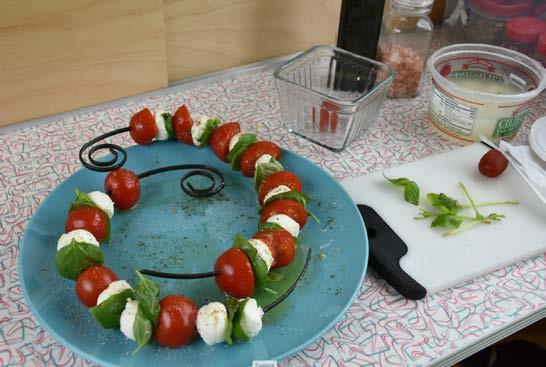
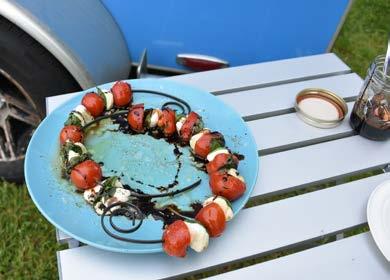
Above: Ready to go on the grill!
Left: Hot off the grill! The tomatoes are blistered and the mozzarella is oozy. These are finished off with a basalmic glaze drizzled on top!
THE GOLD RUSH TRAIL IN BEAUTIFUL BRITISH COLUMBIA
By Elizabeth Vezina
Traveling is a bit of an addiction for us and in the summer months, it is always a delight to take on a more local focus and head out in search of new adventures with our T@G in tow. This past summer, we hooked up and set our destination as the Coast Mountain Circle Route running through the coastal mountain range of south-west British Columbia (campingrvbc.com). The entire loop is approximately 700 km (435 miles) and takes about 11 hours to drive non-stop.
This secondary route that winds its way through spectacular mountain vistas and alongside pristine glacial fed lakes is not only popular with locals, but also is a sought after road trip for visiting Europeans in their RV rentals, particularly with the USD and European currencies currently being so strong against the Canadian dollar. So in addition to exploring this breathtaking part of BC, you will be able to meet fellow campers from around the globe who are also taking full advantage of this beautiful area of Canada. We are very fortunate to call Vancouver Island our home; however, it can be an expensive proposition to bring our trailer, even as small as the T@G is, because the cost of taking the ferry can be quite significant. If you do decide to visit Vancouver
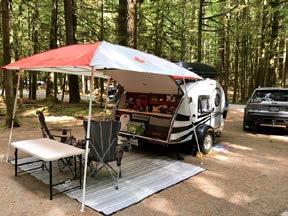

Island as part of your time in BC, be sure to try and benefit from a regular sale that is advertised by BC Ferries called the Extra Length Vehicles Promotion, which will afford you half price savings for every foot over 22 feet of length. For longer rigs this can be a substantial savings, but be sure to reserve your spot as many RV’ers and trucks will take advantage of these sale priced sailings when they are available (bcferries.com). Opportunities for camping and exploring abound along the route. One of the highlights of the road trip is the relatively short distance between available overnight stops, which allows more time for discovery and exploration both while enroute and while base camped out of one of the many excellent provincial or private campgrounds arrayed along the route. Given the increasing popularity of this route, and the myriad of hiking opportunities that exist along the route, it is highly recommended to book early (discovercamping.ca) and if it is possible, a visit in the shoulder seasons during June or September will ensure you are still getting good weather and the route and the attractions will definitely be less crowded than in the summer months. As we plod along on these local adventures, we always try to spend a minimum of 2 or 3 nights in each location, allowing for a proper camp set up and maximising our time in each of the locations to strike out from our base camp and thoroughly explore the new location. We are very grateful in this regard for our T@G, the setup is always quick and easy, and with more than 150 nights under our belts in the last 4 camping seasons, we’ve mastered the art of establishing and breaking camp,
and we have a very comfortable and effective setup that allows us to enjoy every minute of it. With the T@G, simplicity and comfort are hallmarks of the camping experience, and the little trailer really suits our style, a warm dry comfortable night’s sleep, with the day spent outdoors enjoying all that this great country has to offer.
As you begin the loop, the last major town you will pass after having escaped the clutches of Vancouver traffic is the scenic town of Squamish. I don’t know how many times in the past we’ve driven through Squamish allowing for a quick stop for refuelling or a java stop, but having spent more time there on this trip, it was surprising just how much there is to see and do if you have time to leave the main highway strip and delve in a bit deeper. We spent 3 nights at Alice Lake Provincial Park situated only a few minutes north of the town site on this trip. The Provincial Park itself is spectacular, powered sites and flush toilets, and an excellent base camp with easy access to a web of trails for hikers and bikers alike. While at the Park, we explored much of the local area, including a morning spent on the 4 lakes trail
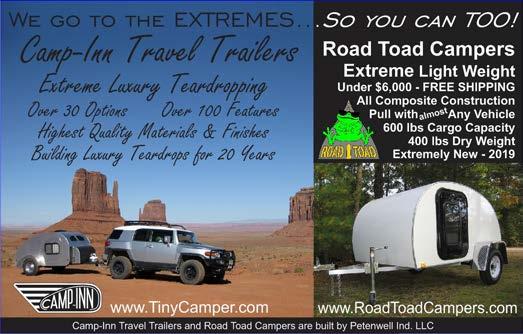
$10 off first order

as well as a visit to the awe inspiring Shannon Falls. Hosted by a friend in town for lunch, we were introduced to the quaint Watershed Grill ( thewatershedgrill.com), a riverside café where both locals and many Golden and Bald eagles hang out above the salmon filled river below. Squamish was a great first stop to our loop and offers many options to resupply for the next legs of the voyage. On our way north after leaving Squamish, we could not resist a stop for a picnic lunch in the Whistler Olympic Village park. There is ample parking available for RVs proximate to the village itself, and everything is easily walkable. This pit stop would not have been complete without a delicious visit to the Pure Bread Bakery where an unlimited choice of delicious goods is always ready to fuel you up for the next leg of your journey.
Our next camping location was Nairn Falls, where we also spent 3 nights. As we all know, all camp sites are not created equal so a bit of research will always be of benefit to find those with the best views and privacy, something made simpler on the BC Parks site ( discovercamping.ca) as each site includes a few pictures of the sites themselves to aid you in making your selection. In our case, a bit of research paid off with a beautiful riverfront site (#93) tucked away in the corner of the campground right next to the roaring Green river. It was during our stay at Nairn Falls that I had my Coup de Coeur of the trip, which was our day hike to Joffre Lakes. The trailhead sits about 30 minutes north of Nairn Falls, it is a very popular hike, and the views at the highest of the 3 glacier lakes make all the work to get up there well worth it. One important piece of advice, go early and avoid weekends. We departed for the trip hike around 8h00 and by the time we got back to the parking lot after 12h, it was packed and the trail up was swarming with hikers struggling up the big inclines. Avoid the crowds and work hard on the 4 hr round climbs and the payoff will all be worth it, some of the most spectacular scenery we’ve ever
experienced!
After 3 days spent exploring the Pemberton area from our base camp of Nairn Falls, we completed the Duffy Lake Highway summit drive down into the Fraser Canyon and our next stop, Lillooet BC. If you like it hot, Lillooet is definitely the place to be, as it is usually one of the hottest places in Canada every summer. We set up our T@G this time at Fraser Cove Campground (frasercove.com) and after a cheerful greeting from the owner himself, we were fortunate to get a site right alongside the immense and roaring Fraser river for our two nights in Lillooet. The campground is located directly across the river from Lillooet, a small town clinging to its gold rush heritage perched on an arid ledge above the mighty Fraser. The campground is just upstream from the old wooden bridge that used to provide access for the camel caravans and ox carts that came to supply the town with the supplies and trappings of the Gold Rush of 1858. The bridge is now home to several Fish Eagle (Osprey) nests, and the banks are full of curious groundhogs that will come out to greet you as you approach the now pedestrian only bridge. In addition to exploring the history of this small town, the highlight of the stop was watching the fisherman below our campsite reeling in 7 to 11 foot long Sturgeon fish, survivors of the dinosaur era that populate the Fraser river. It’s all catch and release, but watching these gents battle these prehistoric monsters for 2 hours at a time was a sight to behold.
Our final stop of the gold rush loop was to head to Cache Creek, a winding and twisting driver of a road that follows the Fraser River to this small hamlet, that shares Lillooet’s history as a Gold Rush town and now serves as the jump off point into the Fraser Canyon and Trans Canada Highway 1 as it winds its way south towards Vancouver. We once again stayed at a Provincial Park, this time it was


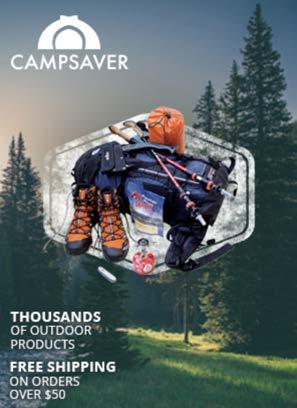
Juniper Beach Provincial Park, located 19km East of Cache Creek on highway 1, nestled in a valley below the main highway, an oasis of green in an arid sea of browns and reds, tucked up against the blue waters of the Thompson River. The campground has power and showers, but only pit toilets are available. It is also recommended that you be somewhat of a train buff when staying here, as the two main lines for the Canadian Pacific Railway and the Canadian National Railway pass on either side of the park. So there is a lot of train traffic through all hours of the day, adding a certain ambience to the campground. This display of heavy machinery is tempered by the ever present wildlife, including some excellent campsite front action of a bald eagle diving and snapping up salmon from the river.
The final leg of our loop brought us through the Fraser Canyon on highway 1, back into the Lower Mainland of BC and the hustle and bustle of Vancouver and its surrounding cities before hopping the ferry back to the peace and tranquility of our Island and home in Victoria. The scenery we experienced throughout this trip was diverse and ever changing, but the one thing all our stops had in common is the attention and curiosity of folks towards our T@G. Folks are always impressed on how compact, well-appointed, and well-constructed it is. Throughout the journey we inevitably ended up hosting several impromptu open houses and distributed a plethora of Nu Camp T@GT@B flyers. I think we should be getting some sort of commission out of this!
Another successful adventure in our super little T@G, exploring our backyard, and the best part: NO PASSPORT required! A breathtaking loop on secondary highways
through the panoramic scenery and history of our beautiful British Columbia. Hopefully one day soon you too can experience this spectacular part of our home province.








